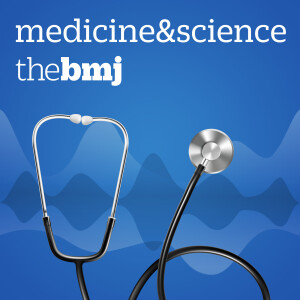
Medicine and Science from The BMJ
Health & Fitness:Medicine

When tackling societal problems - like the opioid epidemic in the US - there are two ways of approaching it. One is to reduce demand - by organising treatment programmes, or reducing the underlying reasons why people may become addicted in the first place - but that’s hard. So governments often turn to the other route - reducing supply - and that’s what the US government did in 2014 when it rescheduled oxycodone combination products from schedule 3 to schedual 2 - essentially making it harder for people to obtain a prescription.
Now reducing that legal supply, without in hand reducing the demand, led to fears that those people with an opioid addiction would just turn to illicit routes to obtain their drugs - and new research published on bmj.com has attempted to find out if that happened.
We're joined by 3 of the authors, James Martin, associate professor of criminology at Swinburne University; Judith Aldridge, professor of criminology at the University of Manchester; and Jack Cunliffe, lecturer in quantitative methods and criminology at the University of Kent.
Read the full research:
view more
https://www.bmj.com/content/361/bmj.k2480
More Episodes
Covid public health - Data is fundamental
 2020-07-22
2020-07-22
 2020-07-22
2020-07-22
What are the chances of an American vaccine?
 2020-07-10
2020-07-10
 2020-07-10
2020-07-10
Wellbeing – how to say no
 2020-07-08
2020-07-08
 2020-07-08
2020-07-08
David Michaels - Doubt is an industry tactic
 2020-07-01
2020-07-01
 2020-07-01
2020-07-01
The corona virus pandemic in South America
 2020-06-15
2020-06-15
 2020-06-15
2020-06-15
Wellbeing - the art of the staycation
 2020-06-15
2020-06-15
 2020-06-15
2020-06-15
Wellbeing - how Burmese Buddhism can help
 2020-06-10
2020-06-10
 2020-06-10
2020-06-10
012345678910111213141516171819
Create your
podcast in
minutes
- Full-featured podcast site
- Unlimited storage and bandwidth
- Comprehensive podcast stats
- Distribute to Apple Podcasts, Spotify, and more
- Make money with your podcast
It is Free
- Privacy Policy
- Cookie Policy
- Terms of Use
- Consent Preferences
- Copyright © 2015-2024 Podbean.com





